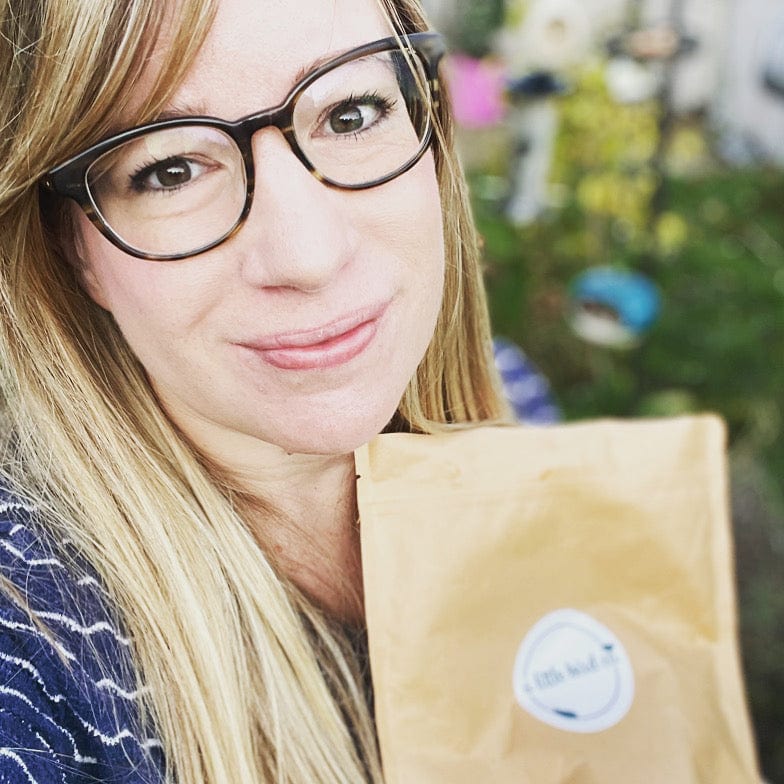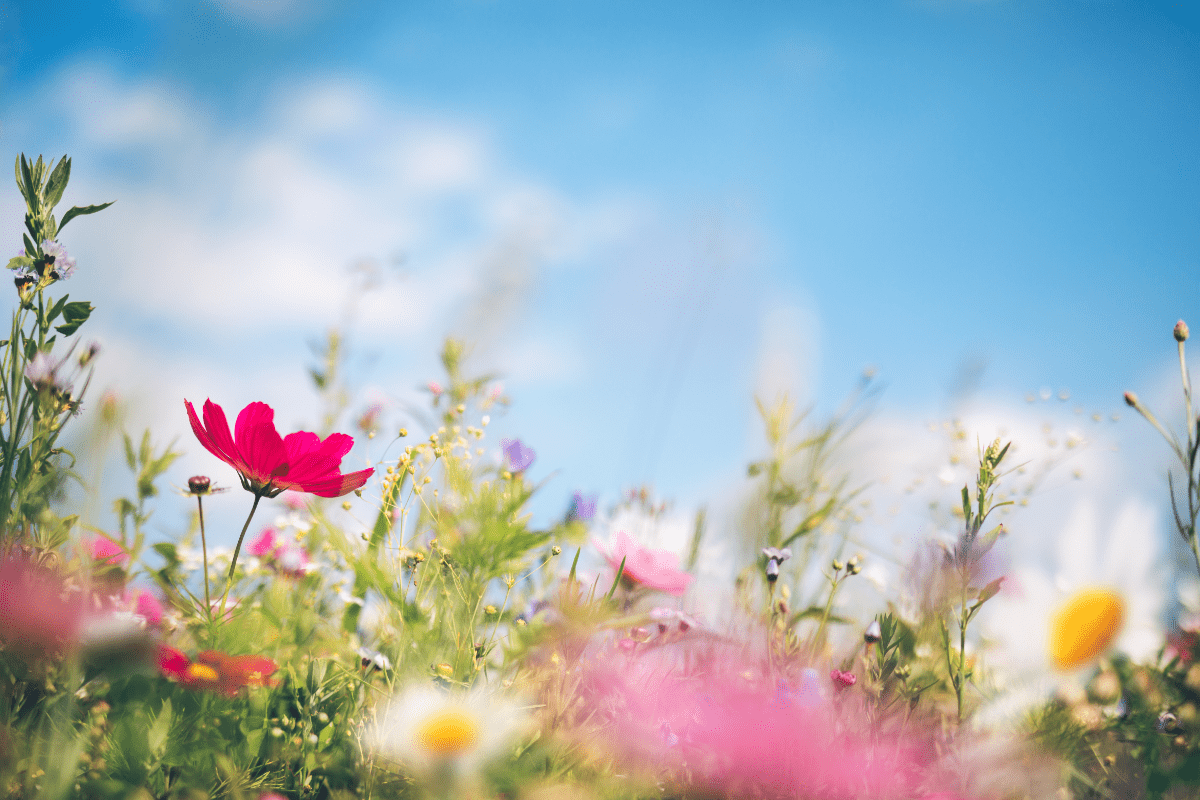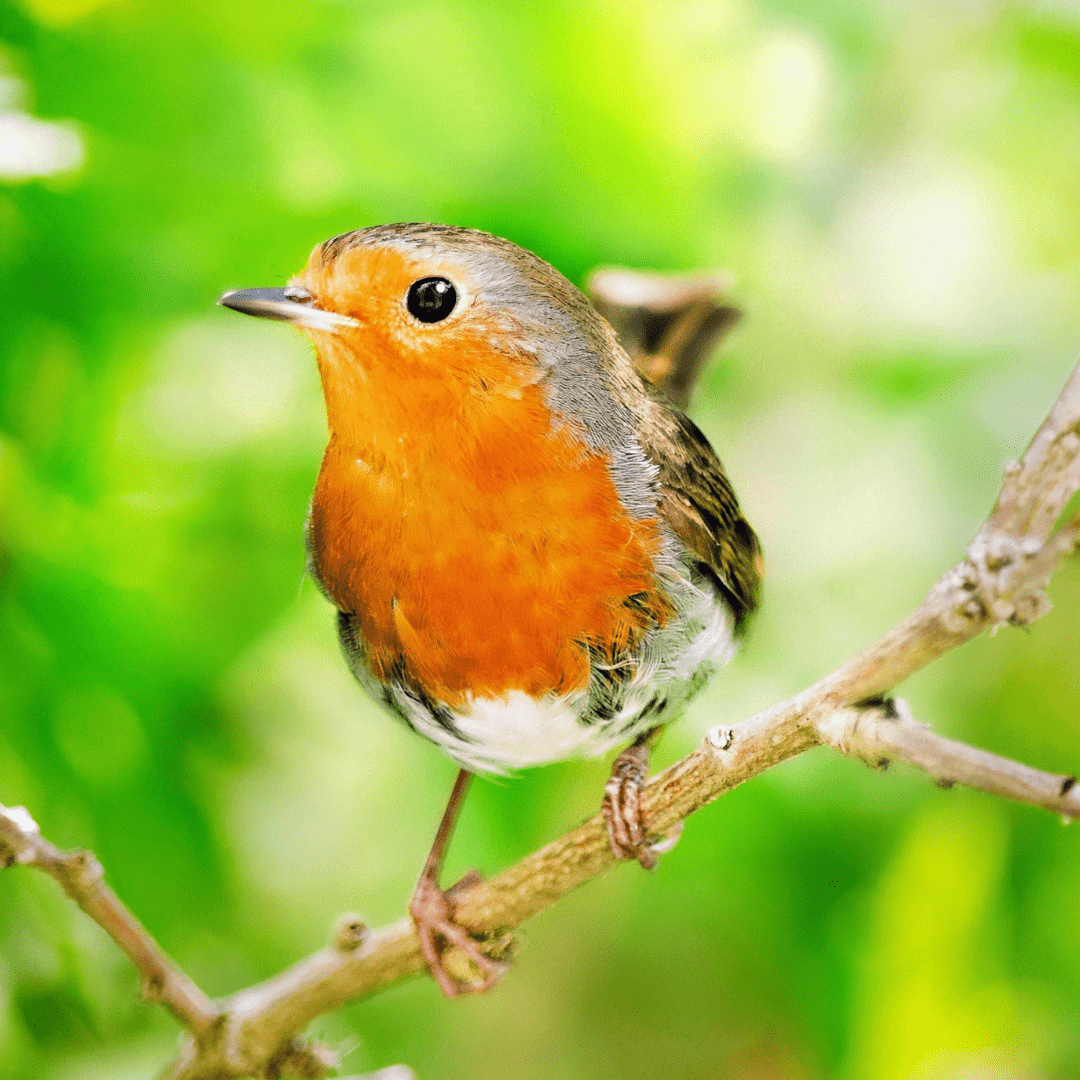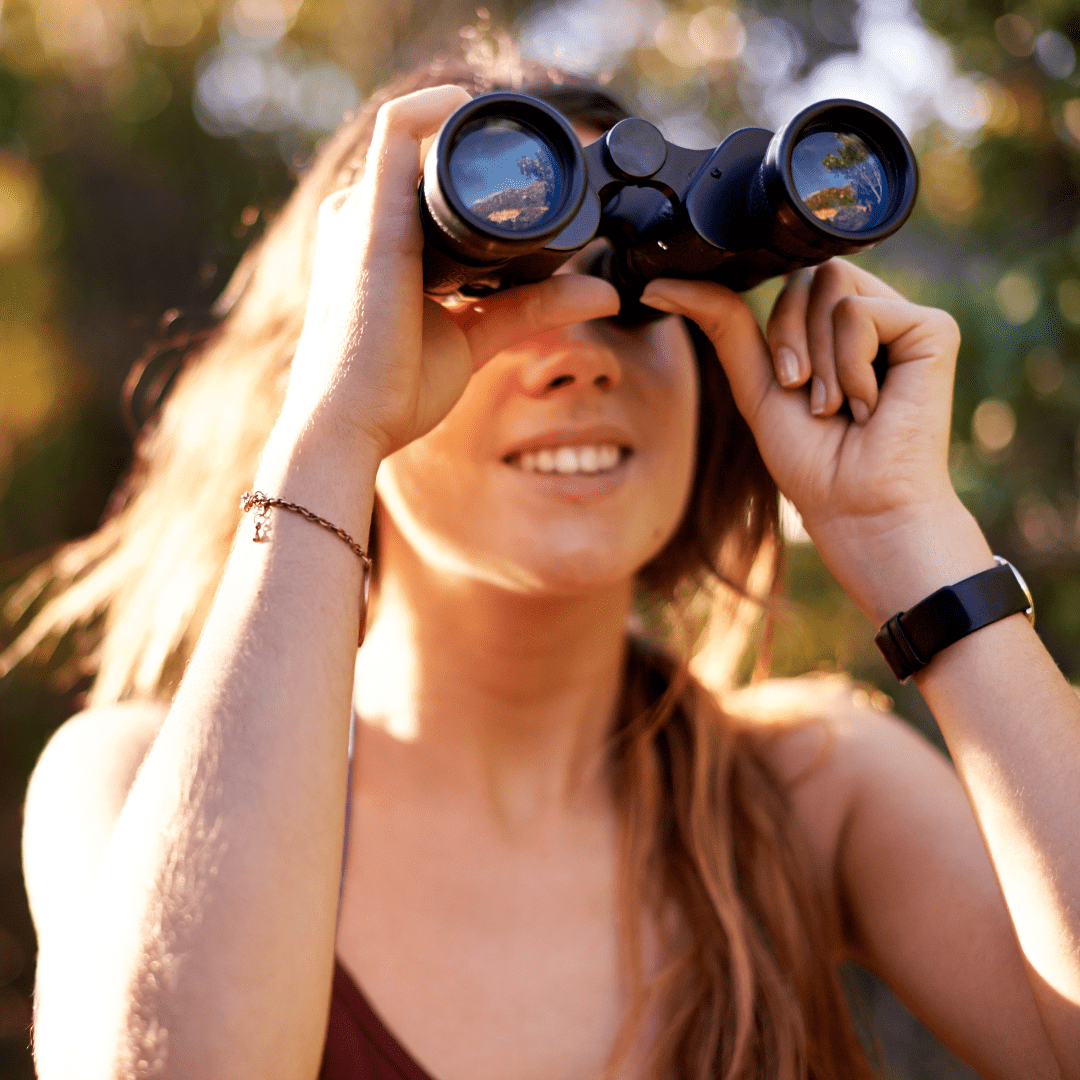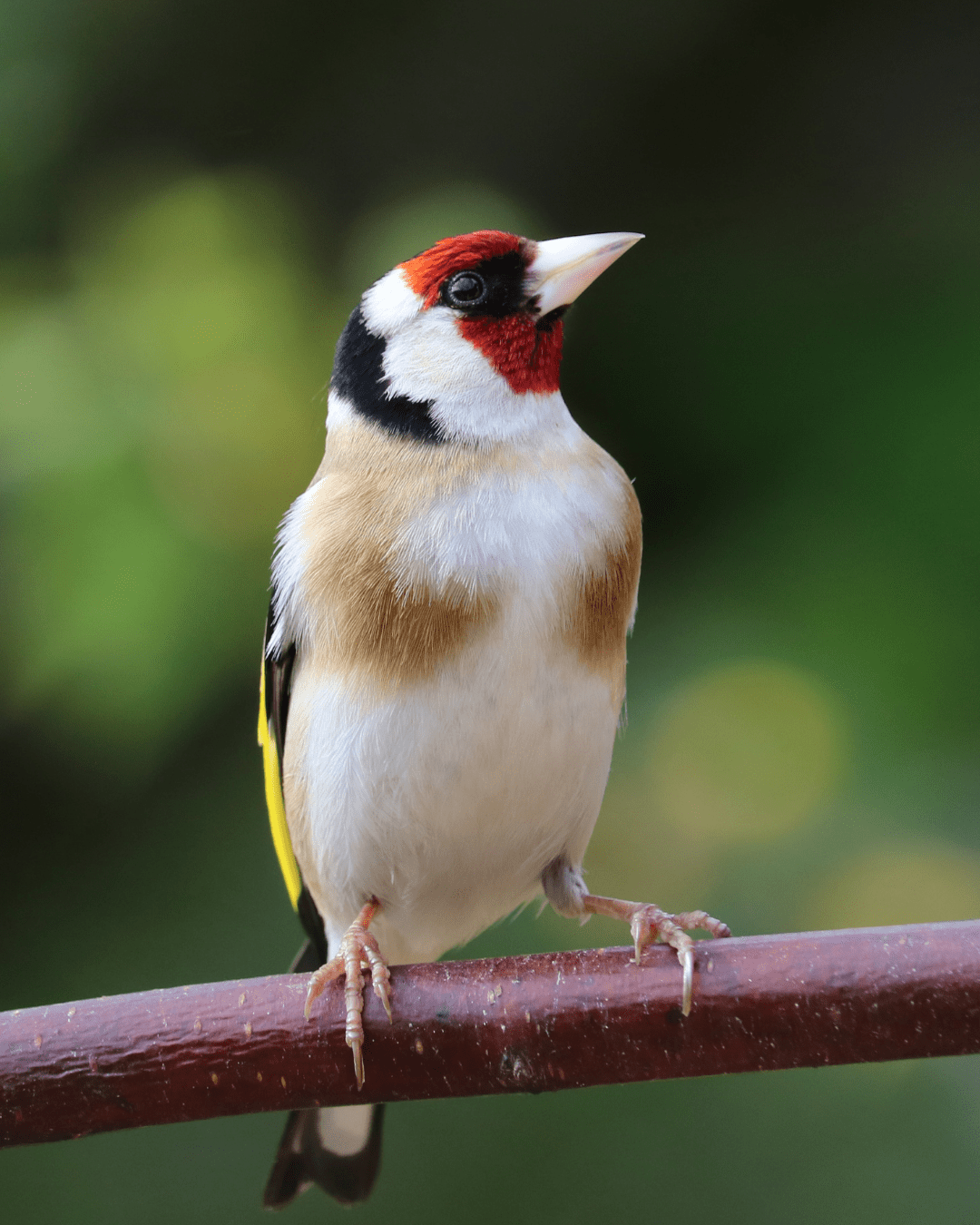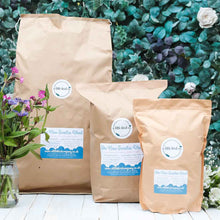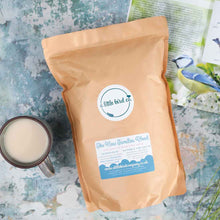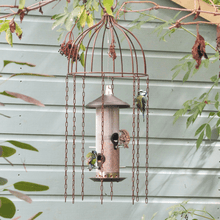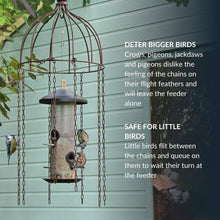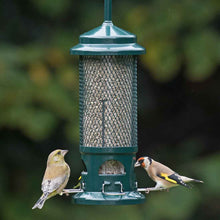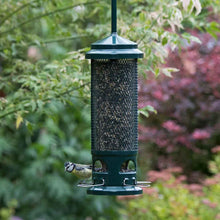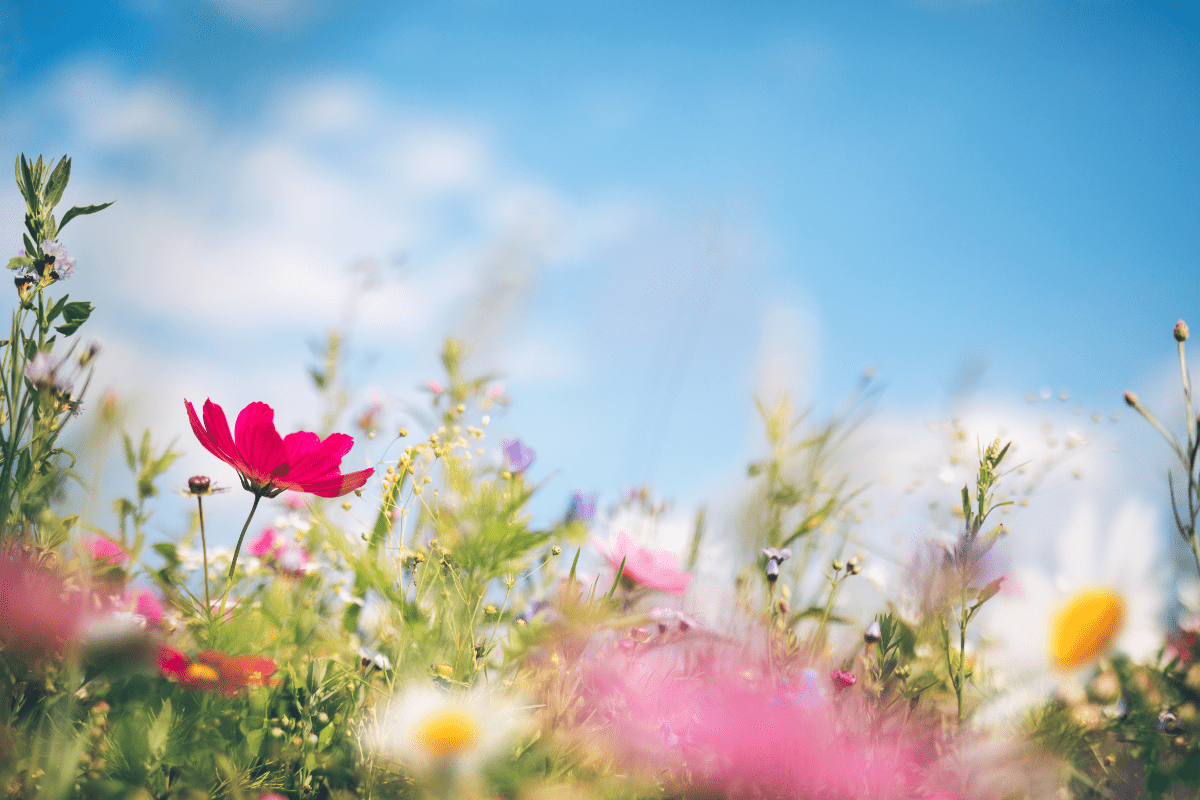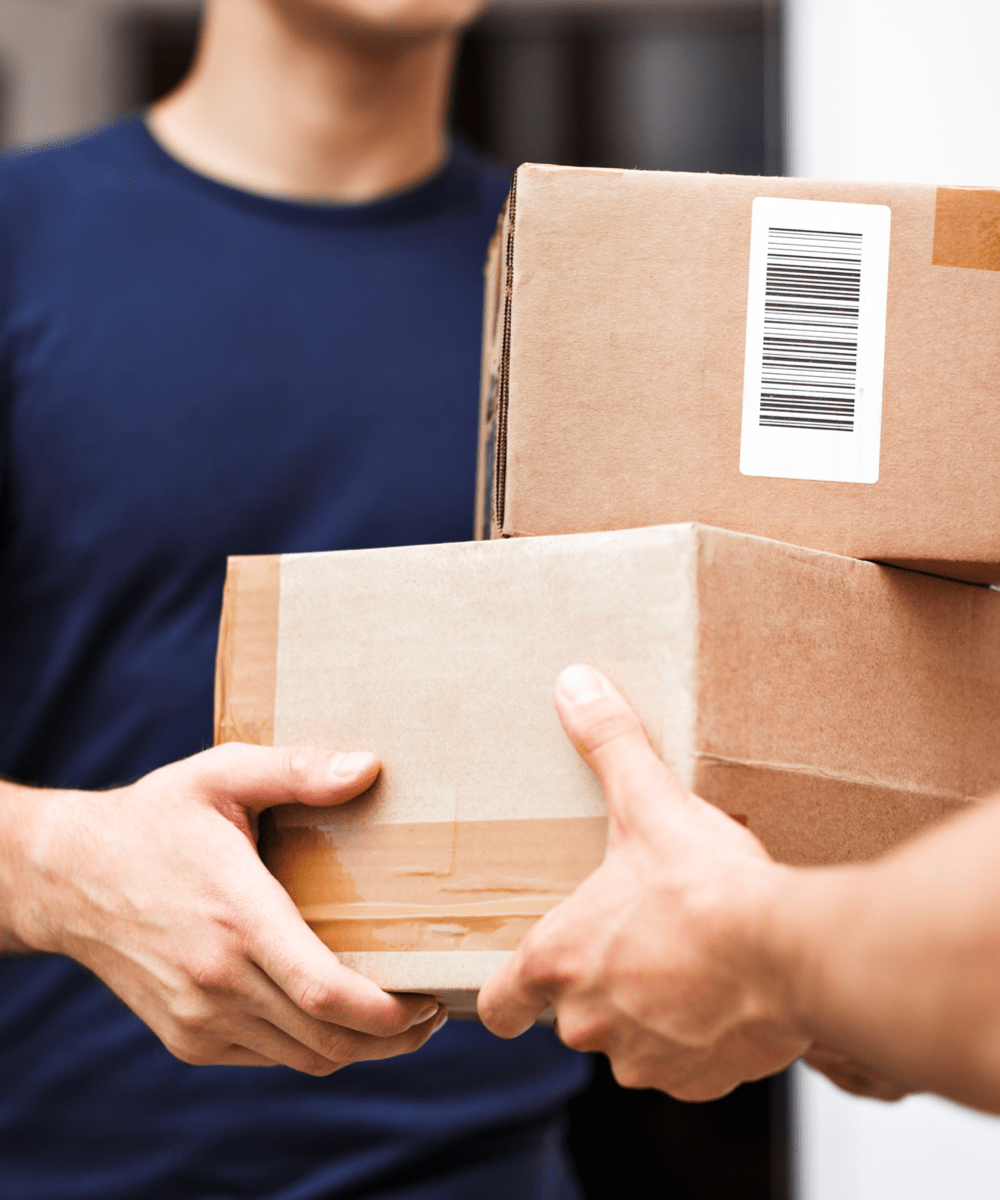The Ultimate Beginner’s Guide to Bird Feeding (And Why Our Starter Set Makes It Simple)

I still remember the first time I saw a goldfinch land on our feeder – its red face and yellow wings were so striking I couldn’t quite believe it. I shouted for my daughters, and the three of us ran upstairs to the back bedroom windows to get a closer look. We were so caught up in the moment that we ended up late for nursery, but it felt worth it, and that excitement and surprise was the beginning of our bird feeding journey.
Bird feeding is of course about helping wildlife. But it’s also about making your outdoor space come alive, and taking 5 minutes each day to enjoy the birds you've encouraged into the garden. If you’re new to feeding the birds, you may be searching for the beginner’s guide to bird feeding and wondering how to get started. This guide will show you exactly how to start bird feeding with confidence – and why our bird feeding starter set makes it simple.
How do I get started?
You might feel worried about not attracting birds, choosing the wrong food, or worse, doing something that could endanger the wildlife you want to support.
The truth is, bird feeding doesn’t have to be complicated. By avoiding cheap mixes and choosing a good quality, no waste bird food, you’ll give your garden birds exactly what they need, safely. With the right food and feeders, you’ll quickly see your garden turn into a bustling hub of life and activity.
Simple Steps to Start Bird Feeding
If you’re just beginning, here’s how to start bird feeding in three easy steps:
1. Choose your feeder. Here’s what to think about when picking the right one:
Hanging seed feeders are the most common choice, and many birds like finches, tits, and sparrows will happily perch on them. Other birds, such as nuthatches and great spotted woodpeckers, prefer to cling to the feeder itself and will even eat while hanging upside down, which is pretty entertaining to watch!
Some species, including robins, blackbirds, and dunnocks, prefer to feed from the ground. However, tray-style feeders and bird tables aren’t recommended because they can attract pests and spread disease. You can read more about this guidance on the RSPB website here. For this reason, we no longer sell tray feeders or bird tables at A Little Bird Co.
There are also what are known as “straight food feeders” for things like peanuts, suet, or niger seed. At A Little Bird Co., we don’t sell these separately because we include all the foods the birds need in our carefully balanced blends. That said, if you’d like to add variety, you can purchase suet feeders, peanut feeders, or niger seed feeders elsewhere. A word of caution: only ever offer whole peanuts in a dedicated mesh feeder, never scatter them on the ground or use net bags. Young birds can choke on whole peanuts, and smaller birds can easily get their feet tangled in net bags, leaving them unable to fly away.
2. Pick the best bird food for beginners. This is where many people get confused, but it doesn’t have to be complicated. At A Little Bird Co., we avoid fillers entirely. Our blends are designed to be genuinely waste-free and tailored to the seasons, meaning every seed is chosen with the birds in mind. By choosing our seasonal mixes, you’ll attract a wide range of species without the mess or disappointment of uneaten food.
3. Place your feeder wisely. Even the best food and feeders won’t work if they’re in the wrong spot. Position feeders near shrubs or trees so birds have shelter but also a clear view to stay safe from predators. If you’re worried about cats, try hanging your feeder above a bed of roses or other prickly plants – it makes it much harder for prowling paws to reach your birds.
Best Bird Food for Beginners
It can be really disheartening when you’ve invested in a brand new feeder and a bag of food, only to find that the seed goes unnoticed. The problem is often the food itself. Cheap supermarket mixes are packed with fillers, like wheat, dari, maize and millet, that most garden birds won’t eat. These grains drop to the ground and quickly sprout, leaving you with your very own unwanted wheat field beneath the feeder.
At A Little Bird Co., we do things differently. We only offer no wheat bird food in carefully designed seasonal blends. You don’t have to worry about which seeds to buy or whether you’re making the right choice. Order a mix of bird food from us, and we’ll send the right blend for the season. Every ingredient is selected to support the birds when they need it most.
Our approach makes bird feeding simple. Once word gets out that your feeder holds a nutritious, high-quality mix, birds from all around will come to investigate, and they'll keep coming back. You can enjoy the excitement of a busy garden, without the waste or disappointment of seed left uneaten.
Seasonal Feeding Made Easy
Birds’ needs change throughout the year, which is why seasonal bird feeding is so important. We’ve written more about how garden birds change with the seasons in this blog post: Your garden birds throughout the year.
At A Little Bird Co., we’re passionate about giving the birds the right foods for the time of year. It’s the reason our small business was set up!
Spring – protein-rich blends help with nesting and feeding chicks.
Summer – lighter, energy-rich mixes when natural food is abundant.
Autumn – calorie-dense foods for building winter reserves.
Winter – high-energy blends with suet and sunflower hearts to survive the cold.
A seasonal approach ensures your feeders are always busy, no matter the time of year.
Tips for Attracting Birds Quickly
Attracting birds isn’t always instantly successful. It takes time and a bit of patience. One of the best things you can do is make watching your feeders part of your daily routine. It can feel like there aren't any birds, but it could just be that you're not noticing them yet. Set aside 5–10 minutes at the same time each day to simply sit still and notice what turns up. Birds are far more likely to show themselves when you are quiet and still, and you’ll quickly learn which species visit at different times.
It can also take a few weeks for birds to build up trust in a new feeder. If your feeder is full but still untouched, don’t worry, it’s completely normal. Birds are cautious by nature, and once one brave individual tries it, the rest will soon follow.
Keeping food fresh is essential. Birds will be put off by stale or mouldy seed, so only top up your feeder with small amounts and change the food every few days. Throw away any uneaten food rather than letting it sit. This keeps your feeding station clean and reduces the risk of disease.
Finally, make sure you provide a clean source of water for drinking and bathing. Combined with fresh, good-quality food and a consistent feeding routine, these steps will help encourage regular visitors and keep them healthy.
Creating a Bird-Friendly Garden
Food is just one part of the picture. To really attract birds to your garden, you need to think about the whole ecosystem. That means considering everything from the worms and insects in the soil, to the hedging that provides safe nesting, to the pollinators you encourage with the right plants. It also means thinking about the trees that provide homes for thousands of insects, fungi, and other creatures that in turn benefit the birds. Everything is connected – if you support insects and pollinators, you in turn support the birds that rely on them.
We’ve written more about this in our post on designing a more sustainable, wildlife-friendly garden. But in short, creating a space that works for all wildlife is one of the most rewarding things you can do. By layering habitats – healthy soil, native hedges, trees, and pollinator-friendly planting – you give birds food, shelter, and a safe space to raise their young.
If you’re looking to make your garden more bird and pollinator friendly, here are some excellent plants to start with:
Evening primrose
Sunflowers
Tufted vetch
Yew
Briar rose
Cornflowers
Columbine
Thistles
Foxgloves
Tufted hair grass
Hawks beard
Teasel
Geraniums
Ox-eye daisies
Barrenwort
Pasque flower
Pink dandelion
Scabious
Meadow rue
Globeflower
Red valerian
Nasturtiums
Violets
Poppies
Pennywort
Arctic bramble
Lavender
Honeysuckle
Dogwood
Wild marjoram
Planting a variety of flowers, shrubs, and grasses like these ensures there’s nectar for pollinators, seeds for birds, and shelter for everything in between. The more connected and diverse your garden becomes, the more life it will support – and the richer your daily birdwatching will be. And finally, avoid using herbicides and pesticides – these not only harm insects but also disrupt the natural balance that birds depend on.
Bird Feeding Problems Solved
Even the most enthusiastic beginners face challenges, and over time you’ll start to notice the pecking order in your garden. Bigger birds like crows, jackdaws, pigeons and parakeets often get the first turn at the feeder, and squirrels can be just as quick. Sometimes these larger visitors take over completely, leaving smaller birds without a chance. If this becomes a problem, consider investing in specialist feeders such as the Medusa, Squirrel Buster or Starling Proof Feeder Set.
Other common problems include:
Mess below the feeder: Even with the best food, husks and dropped seeds can build up underneath. Clean the area regularly and move feeders occasionally to keep the ground healthy.
Dirty feeders spreading disease: Feeders need cleaning at least once a fortnight with hot, soapy water or a specialist disinfectant. This helps prevent illness from spreading among birds.
Food going stale: Birds will ignore mouldy or old seed. While you're getting started and establishing your garden as the place to be, fill feeders with a handful of food and replace food every few days so it stays fresh and appealing.
Cats: Should I feed the birds if I have a cat? This is a question many people ask, and the answer from organisations like the RSPB and BTO is yes – you should still feed the birds. Cats are a concern, but there are practical steps you can take to keep birds safer. Place feeders in open spaces where cats can’t easily hide and pounce, and avoid putting them near fences or dense cover that gives predators an advantage. Hanging feeders above thorny or prickly plants like roses can act as a deterrent, and placing feeders higher up gives birds a clearer line of sight to spot danger and escape quickly. You can also consider fitting your cat with a quick-release collar and bell to give birds a warning. Guidance from the Humane Society also notes that feeding birds year-round, even in gardens with cats, is still beneficial – the key is to make thoughtful choices about placement and safety.
Running out of bird food: Once the birds in your garden know they can rely on you, they’ll keep coming back. It’s important not to let them down by leaving feeders empty. Subscribing to regular deliveries of our seasonal blends means you’ll never run out, and the birds will always find food waiting.
Another helpful step is to put up more than one feeder in different spots around the garden. This reduces footfall at each feeder, which not only gives smaller birds a better chance but also helps limit the spread of disease.
With a few small changes and regular care, these problems are easily solved – and your birds will thank you for it.
Why Our Starter Set Takes Away the Guesswork
That’s why we created the A Little Bird Co. Starter Sets – everything you need in one box, with options for adults and children.
Our popular set includes a high-quality feeder, a bag of our seasonal no wheat bird food, and a copy of Amidst the Birdsong, our nature journal designed to help you slow down and connect with the birds you’re feeding. It’s perfect if you’re new to bird feeding or want to give someone a thoughtful, nature-inspired gift. Once you’re up and running, you can also set up a subscription so you’ll never run out of food.
Little Birders' Bird Feeding Set
This bird feeding set is designed especially for children, this set includes a child-friendly feeder, a bag of our seasonal blend, and our Little Moments Outdoors book to inspire observation, and care for wildlife. It’s an eco-friendly gift that sparks curiosity and builds a love for nature from an early age.
Both sets are designed to take away the guesswork and make bird feeding simple, safe, and fun. Whether you’re setting up your own feeder or encouraging a child to enjoy nature, our starter sets are the easiest way to begin – and they make brilliant gifts too.
Caring for yourself as well as the birds
Feeding the birds isn’t only about supporting wildlife – it’s also about supporting your own wellbeing. Research has shown that spending time in nature can reduce stress, lift your mood, and help you feel more connected. Watching birds at your feeder can become a daily ritual, encouraging you to pause and notice the small things.
It always gives me perspective. The birds aren't worrying about the future or dwelling on the past, and when I'm watching them I'm able to be in the present just like them. It always leaves me feeling calm, grounded and more ready to start the day, and I notice if I've not taken a few minutes to connect with them.
In our blog post on nature, mental health, and wellbeing, we explore how birdwatching and time outdoors support both adults and children alike. Setting aside just a few minutes each day to notice who visits your feeder can become a calming practice, offering moments of stillness in busy lives.
It’s not just about the birds – it’s about creating a daily rhythm that nourishes you, strengthens your connection with the natural world, and brings joy to your family.
Start Today
Ready to create a bird-friendly garden filled with colour, song, and movement? With our bird feeding starter set, you’ll have everything you need to start bird feeding the right way – with ease, confidence, and no waste.
Choose your set today: Bird Feeding Starter Set or Little Birders' Wildlife Gift Set. Start feeding the birds the simple way, and enjoy the joy and colour they bring to your garden.

